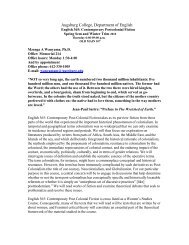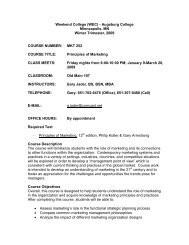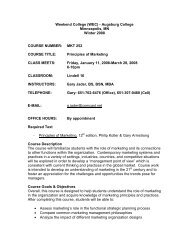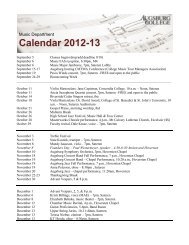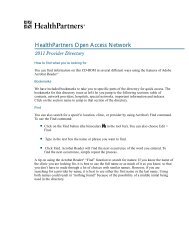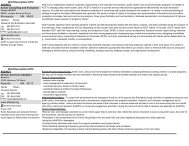Create successful ePaper yourself
Turn your PDF publications into a flip-book with our unique Google optimized e-Paper software.
Geometry: A Shapely Approach to Math<br />
Also, note that the diameter is the longest chord in a circle. Thus the longest line connecting two points on a<br />
circle always goes through the center of the circle!<br />
At this point, ask the kids if it is possible to draw a straight line that only touches a circle at one point. (Yes,<br />
it is possible!) This line is called a tangent line to a circle.<br />
Now ask your students if it is possible to draw a line through three points on the circle? (This is imossible<br />
if the line is straight, but if it’s curved it can cross the circle at infinitely many points!) Have your kids explain<br />
their responses.<br />
Now, to solidify these ideas, have the kids draw a few circles of different radii with a compass. Then, for<br />
each circle, ask them to measure the radius, diameter, and circumference. For each circle, they should write r<br />
=, d =, and c = and then fill in the blanks after each letter. Encourage them to measure as carefully as possible.<br />
They can use a string to measure the circumference by laying the string around the circle on the paper and then<br />
measuring the length of the string with a ruler. This will teach them that each circle has a different radius, diameter,<br />
and circumference, and thus that the letters r, d, and c stand for different numbers when they correspond<br />
with different circles. Also ask them to draw a tangent line for each circle.<br />
Ask the students if they can draw two cirlces, both with a radius of 3 but with two different circumferences?<br />
This is impossible, as they will figure out. It is also impossible to draw two circles with the same circumference<br />
but different radii. This is because, as the radius of a circle increases, so does its circumference, and it turns out<br />
that the circumference and radius have a special relationship. When you divide the circumference of some circle<br />
by the radius of the same circle, you will always get the same answer no matter how big or how small your<br />
circle! The answer you get is pi (pronounced like apple pie). The mathematical symbol used for pi is π, and its<br />
numerical value to five decimal places is 3.14159. Thus, using only symbols and letters, we can write π = c / d.<br />
Before you explain all this to your students, help them to discover it on their own! For each circle that they<br />
drew earlier, ask them to calculate (with a calculator) the value of the circumference divided by the diameter.<br />
When they are done, they should compare the values they have calculated. Then, they can also compare their<br />
values with the other students in the group. Although their values will not be perfectly precise due to inevitably<br />
imperfect measuring, all their values should be close to 3.14.<br />
47



